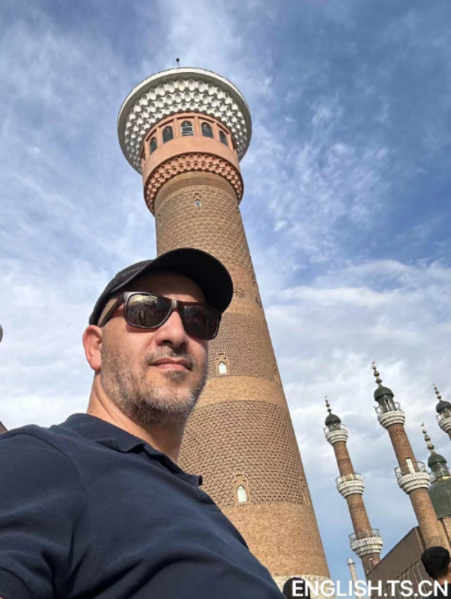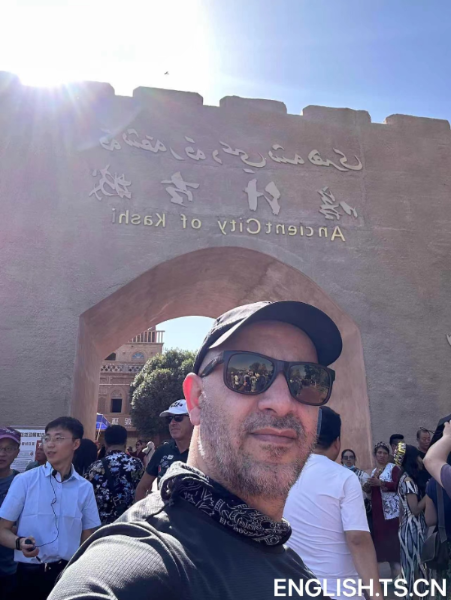I revisited Xinjiang for the second time in less than a year, and I'm eager to return whenever the opportunity arises.
During my initial trip, I was captivated by the allure of Xinjiang, a pivotal stop on the ancient Silk Road. Simultaneously, I was compelled to confront the realities of the region, which are often portrayed negatively, particularly in certain Western media outlets.

On my second visit, while the sense of wonder remained potent, many of the negative preconceptions surrounding the region had dissipated.
But what is the underlying reason for this fascination with Xinjiang?
In reality, there's a wealth of history behind the allure that accompanies visitors from Arab countries to Xinjiang. This region serves as a living testament to cultural, civilizational, social, commercial, and linguistic amalgamations along the ancient Silk Road, including influences from Islamic civilization. It's a profound lesson in how history can be embraced positively without becoming its captive.

Yet, it's not merely about the past. Xinjiang imparts valuable contemporary lessons. China is home to approximately 56 ethnicities, all coexisting in Xinjiang without exception. This diverse tapestry, where identity, authenticity, heritage, and modernity coalesce without conflict.
To paint a comprehensive picture, we must also look towards Xinjiang's future lessons. As a visitor from Kuwait, an oil-rich nation striving for economic diversification, I keenly observe the aspirations to foster balanced prosperity across all sectors in Xinjiang. This entails harnessing strengths while seizing potential opportunities.

Returning to the enchantment of Xinjiang, witnessing Uygur dancing evokes an unmistakable connection for any Arab visitor. I firmly believe that with just two consecutive days of practicing on the streets of Kashi, any Arab can master Uygur dancing. Similarly, the resonance extends to simple pleasures like bread and vibrant depictions in the fragrant courtyards of Kashi, embodying the essence of the Arabian Nights deeply ingrained in Arab collective memory. Moreover, symbols like the camel, shared between Xinjiang and Arabic regions, particularly in the Arabian Gulf, resonate deeply. Likewise, the pomegranate, an icon of Xinjiang, holds shared significance with Arabs from Syria, Lebanon, and Palestine.
For all these reasons, I believe Xinjiang serves as one of many gateways fostering connections between China and Arab countries, albeit not the sole conduit. With doors wide open and bridges firmly established, Sino-Arab relations, whether bilateral, as in my case with Kuwait, or with the broader Arab world, continue to flourish unhindered.
These are just a few of the insights gleaned from my two visits to Xinjiang, and I eagerly anticipate the perspective the third visit will bring, undoubtedly accompanied by more profound lessons.
Charbel Barakat is a Lebanese journalist based in Kuwait.
Planner: Jie Wenjin
Reviewers: Hou Weili and Wang Xiabing









